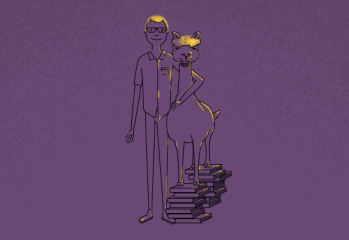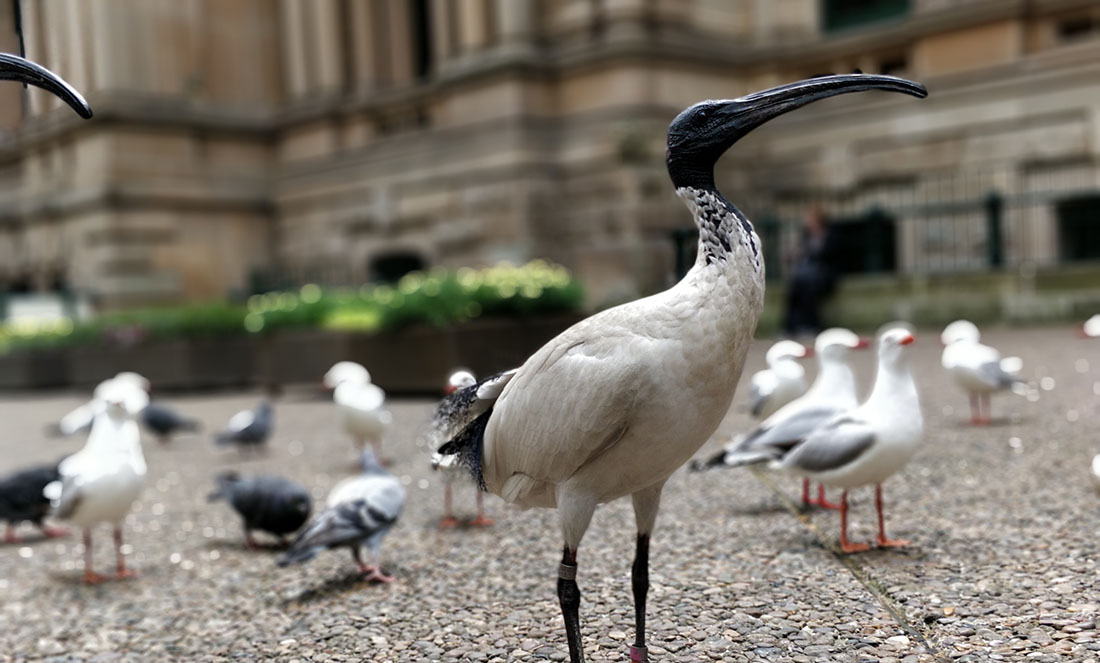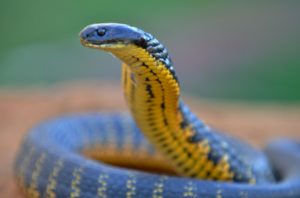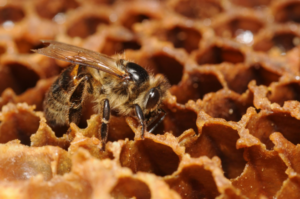Australia has a long and proud list of iconic birds, from the black swan to the kookaburra, galah and our flightless friend, the emu.
But in recent years, one bird has flown into the Australian spotlight. It’s featured in songs, viral videos, t-shirts and even tattoos and become somewhat of an cultural mascot. Despite being often derided with distaste, the tenacious ‘tip turkey’ has risen among the ranks.
It’s the Australian white ibis; more commonly known as the ‘bin chicken’.
More than just trash talk
When most people picture an ibis they think of a grubby white bird with a long curved beak fossicking for food scraps. Labelled as disgusting scavengers, they’ve been associated with other nuisance birds like pigeons and seagulls.
The white ibis (Threskiornis molucca) used to be known as the Sacred Ibis because it was thought to be the same species as the sacred ibis of Africa, once worshipped by ancient Egyptians as the moon-god Thoth. In 1991, research classified them as three distinct species.
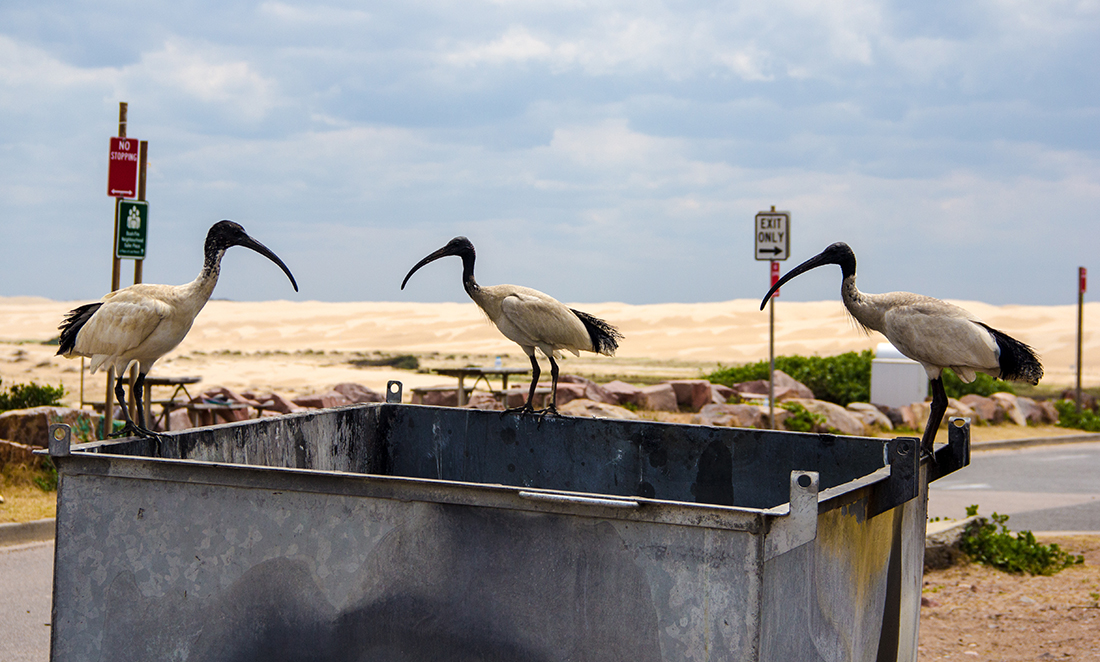
Unlike its city-dwelling cousin, the straw-necked ibis has earned itself an affectionate nickname – ‘farmers’ friend’. This black-feathered ibis with straw-like throat plumage prefers the slower pace of rural life and feeds on the hoards of grasshoppers and locusts that often plague Australian crops.
The glossy ibis gets its name from its shiny coat. From a distance this smaller ibis species seems to have a metallic sheen but up close its plumage is a deep green and purple colour. It prefers wetlands and swamps to city areas or farms.
Love birds
Ibis are monogamous creatures. During ibis mating season from September to April, a male ibis will attract a female by bowing from his bin – or branch – and offering her a twig. If she accepts the bird equivalent of an engagement ring, the couple forge a bond and fly off to build a nest together.
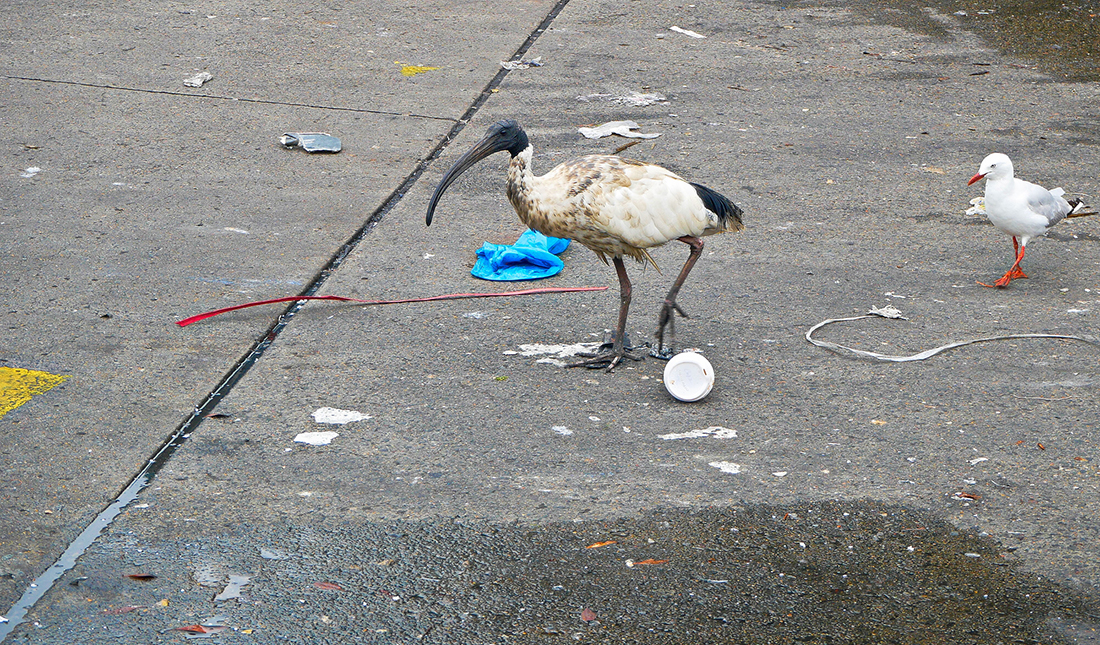
These birds roost in big colonies, sometimes with straw-necked Ibis. They may raise one or two broods of chicks a year.
And it would seem they are not totally despised. In 2019, the white ibis made it into the top 10 most common urban birds in Birdlife Australia’s Aussie Backyard Bird Count for the first time.
They are one of us
The Australian white ibis is a native species. It migrated from interior wetlands to urban areas when its habitat began to diminish in the 1970s. Since then, its populations have continued to grow in city areas where there’s enough food. In some cities, their numbers have grown to the point of culls being ordered, like when authorities ordered a cull of 100 ibis they said posed a bird strike risk to flights at Perth Airport in 2018.
Although widespread degradation of Australia’s inland wetlands has caused severe declines of many waterbird species, there may be a glimmer of hope. Recent genetics research found there’s enough genetic diversity among city ibis populations to ensure its country cousins won’t die out just yet.
Bonus facts
- 40% of Australian white ibis’ eat at landfills every day.
- The Yindjibarndi people of the central and western Pilbara refer to this bird as Mardungurra.
- Australian white ibis have an average lifespan of 28 years.
- Their favourite foods are fish, crayfish, frogs and insects.
